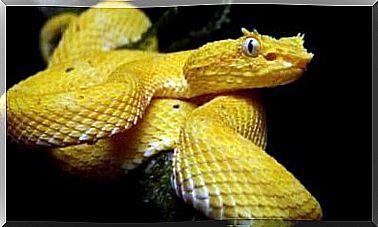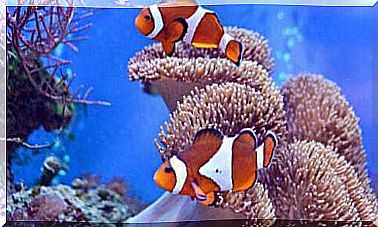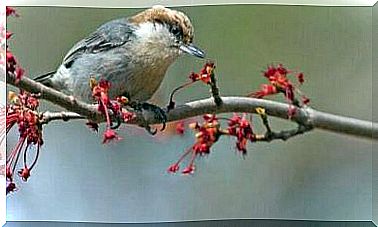The European Mink Is Seriously Threatened With Extinction
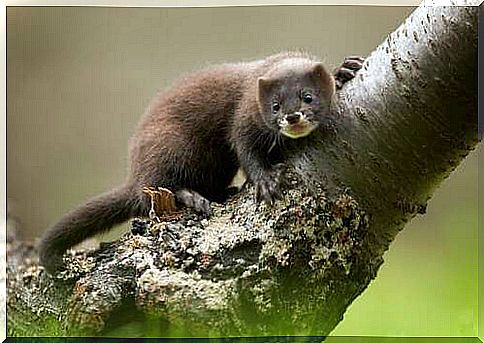
The European mink ( Mustela lutreola ) is seriously threatened with extinction : it is in fact one of the most threatened mammals in Europe. The loss of habitat, hunting and, above all, the invasion of an invasive and dominant species, the American mink, are the main factors contributing to its disappearance.
How to distinguish the European mink?
One of the difficulties of the experts for the conservation of the European mink is the competition with the American mink, a species introduced almost a century ago in Europe to exploit its fur.
They are very similar animals, belonging to the same mustelid family and with almost the same appearance and behavior. However, there are some traits that help us differentiate them. The European mink has the following characteristics:
- It is smaller in size.
- It has the lightest fur. The coat of the European mink is a chocolate color, slightly lighter than that of its American relative.
- It has white markings on its chin and on both sides of its muzzle.
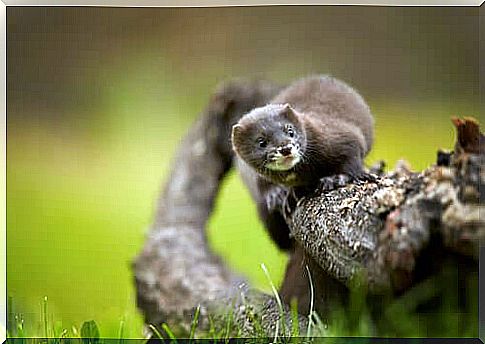
In addition to these morphological differences, there are others that affect behavior. The American mink is more aggressive and is a less demanding species in its habitat, as it easily adapts to any type of aquatic environment and has a greater reproductive capacity.
Causes of the disappearance of the European mink
There are three main factors that cause the progressive disappearance of this species. The actions to be taken on each of these points constitute the most effective strategies for its conservation.
1. Competition with the American mink
The American mink is a small North American mustelid. It began being bred in captivity in Canada and the United States in the late 19th century to trade its fur. In 1920 it was decided to import the business to Europe, where fur farms spread rapidly.
Due to the massive escapes caused by insufficient security systems, the progressive abandonment of the activity, as well as the releases advocated by animal rights campaigns, the result was that several wild populations spread into the natural environment.
The great adaptability and reproductive capacity of the American mink make it a very aggressive competitor for the other mustelids, in particular for the European mink, which must fight for the same territory and the same resources.
2. Fragmentation of existing populations
The European mink has already disappeared from 90% of its original range in Europe and the populations that still remain are isolated from each other.
The western population, the Franco-Spanish one, is cut off from the east (Danube Delta and Russia) and, in turn, is fragmented internally, given that the French and Spanish mink have no contact with each other.

Genetic isolation implies a great loss of biodiversity which makes the European mink an even more fragile species. One of the objectives of captive breeding is precisely the exchange of specimens to increase genetic variability.
3. Habitat destruction
The European mink is an animal that thrives only in specific environmental conditions. Generally, it prefers areas with a wide embankment, with dense vegetation and with good quality water, with slow or moderate current. River ecosystems are among the most affected by human action.
The destruction of river vegetation, the exploitation of aquifers, water pollution and the construction of architectural barriers that modify the natural regime of the river are the most common causes of loss of these ecosystems.
Conservation strategies for the European mink
Conservation strategies aim to combat competition with the American mink, fragmentation of existing populations and habitat destruction. Currently, there are several conservation programs across Europe to save this species from extinction. Here they are:
1. Census of the population
Knowing the situation of the European mink in the wild is essential for carrying out an assessment of the species. In this sense, acquiring, regaining and tracking as much information as possible in the field is essential to obtain real data.
It is also important to know the population density of the American mink to understand whether invasive species management strategies are working.
2. Captive breeding and reintroduction
The European mink is currently included in the EPP ( European Endangered Species Program ) ex situ conservation program , which supports reintroduction projects in countries such as Estonia, Germany, France and Spain.
One of the main problems that make captive breeding of the European mink difficult is the attitude of the male. In fact, during the mating season, he shows disinterest, runs away from the female or, as has happened in some cases, can behave aggressively.
There are still not enough studies to verify what factors make captive males different from wild ones, but experiences in other centers with animals of the same family such as the Eurasian marten ( Martes martes ) suggest that the animal’s previous experience, l age or competition with other males can influence the success of copulation.
3. Prevention of the expansion of the American mink and conservation of the habitat
To stop the expansion of the American mink, it is necessary to control the spread of populations and avoid the creation of new fur farms, which pose a great risk to the European mink.
The implementation of measures for the protection and restoration of river ecosystems is also very urgent, to strengthen connectivity between the areas where the species lives and thus improve genetic exchange. Without removing the fact that the conservation of river habitats is also beneficial for many other species that are at risk of extinction.

